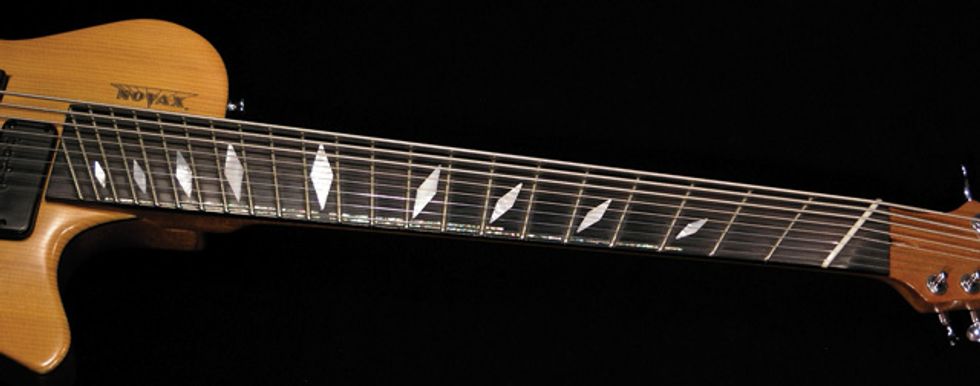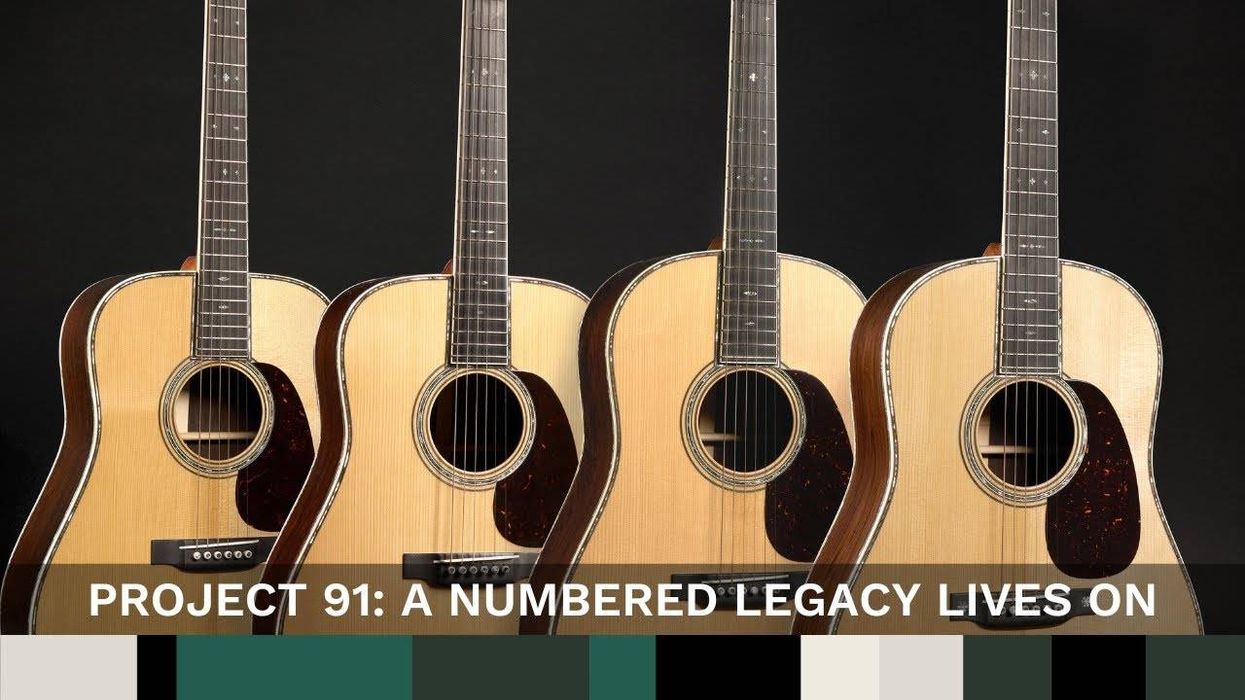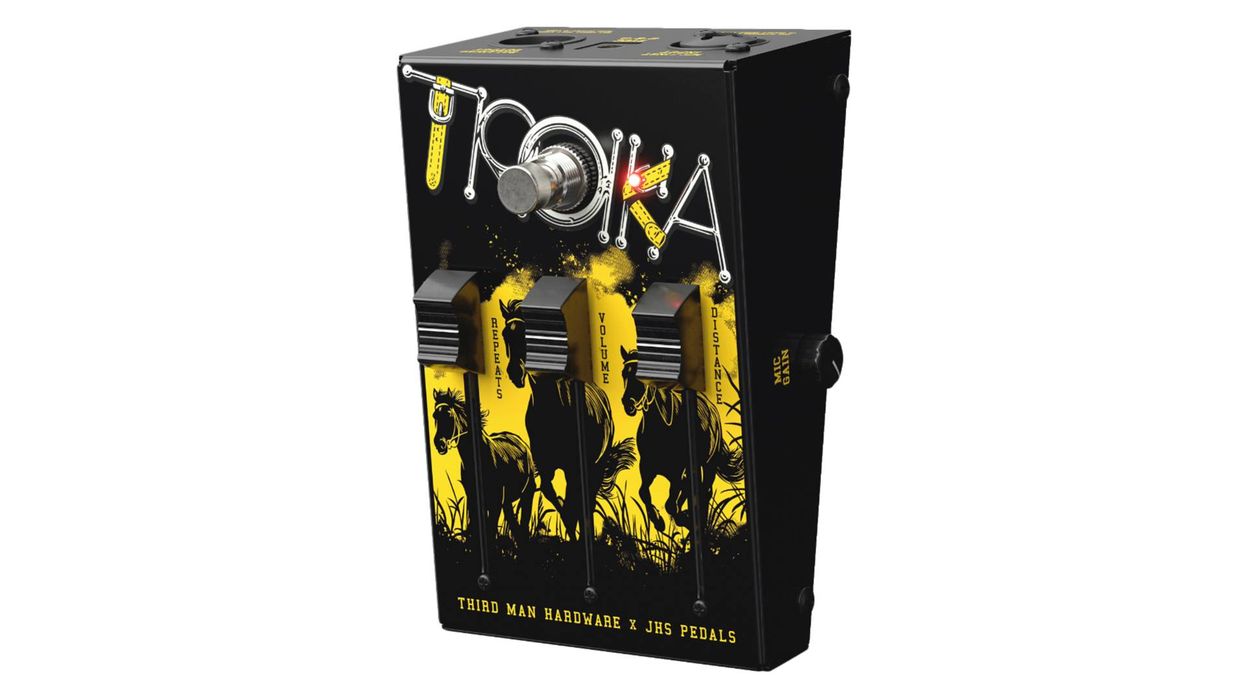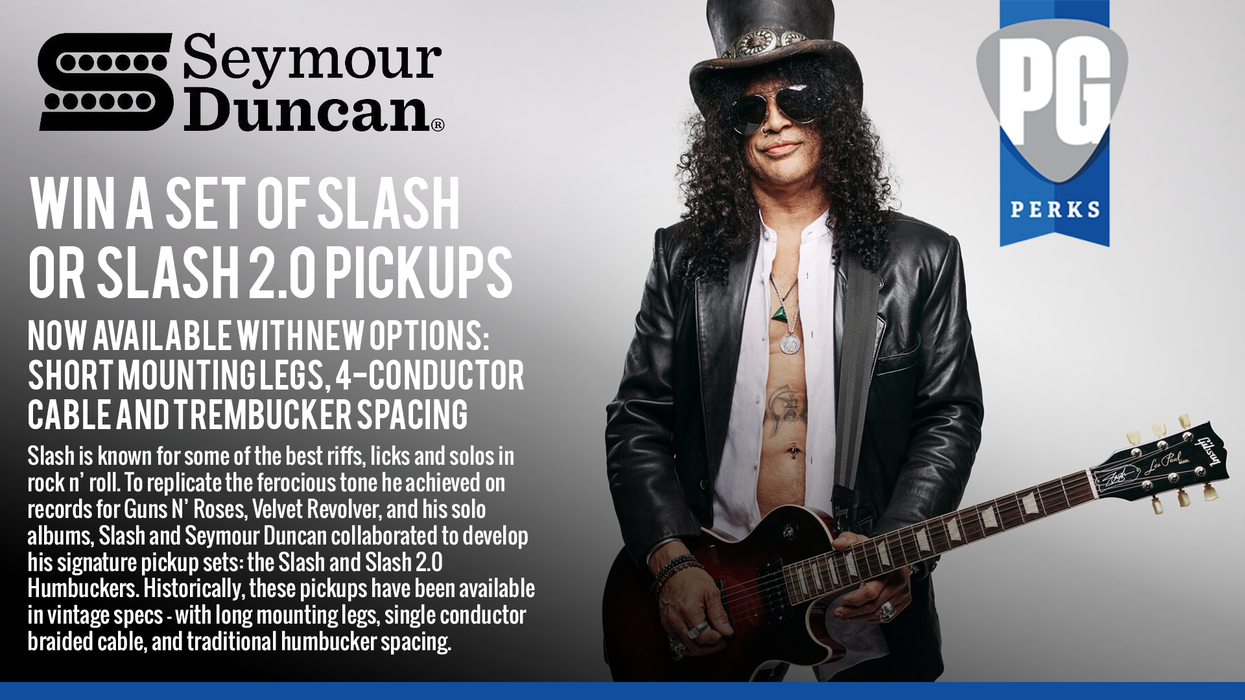In my previous column, we explored several alternative approaches to the pesky problem of intonation, Tuning the Fretboard. Now let’s look at a few other things builders have done with the fretboard.
Multi-scale fretboards. Currently, there’s a lot of discussion about how to get more tension and punch for the often floppy low-B on a 5-string. For some players, the low B feels like it belongs to a completely different set of strings, and that’s annoying. Despite the “Jaco only needed four strings” attitude, several creative minds have put some effort into the question of improving the tension of low strings. One approach is to use fanned frets.
You may recall the short equation in the April 2013 column that gave us the tension of a string. The equation showed that going to a longer scale length gives us a higher tension. (For more details, see The B-String Extender Myth.) This is the basic idea behind the multi-scale or fanned fretboards that were patented by Ralph Novak in 1989.
A Ralph Novak 8-string with fanned frets. Jazz guitarist Charlie Hunter played a Novax
8-string for many years. Photo courtesy of Novax Guitars
Fig. 1 shows an 8-string Novak with fanned frets. The principle had already been used by some 16th-century lute builders, but it was Novak who pioneered the multi-scale fretboard for modern electric instruments.
On grand pianos and harps, string length varies with the pitch of the string, but on single-scale instruments, you can only vary parameters like the overall thickness or ratio of core and windings to get a good balance across the fretboard. The scale length also determines the amount of upper harmonics. Going for a longer scale with more tension increases them, making low notes sound more defined and articulate.
How does it feel to play a bass with fanned frets? Different, for sure. Personally, I had some problems in the upper register, where the frets begin to flip direction above the 12th fret. So if you spend significant time in this register, give this area some additional attention when you try out a fanned-fret instrument. But if you’re an old-school player who works mostly in the lower frets, you could feel right at home.
The multi-scale concept
also works with fretless instruments.
The multi-scale concept also works with fretless instruments, as shown in Fig. 2.
Detune with constant tension. Another unconventional fretboard design came from the mind of Philip Kubicki, who developed a handy way of detuning the 4th string from E to D with the flip of a small switch positioned at the headstock of his Ex Factor basses.
Designed by the late Philip Kubicki, Ex Factor
basses allowed you to drop the E string to a D without changing its tension, as would occur with
normal detuning. Photo courtesy of kubicki.com
Releasing the string from E to D extended its scale from 32" to 36" and exposed two additional frets (Fig. 3). Instead of slackening the string—the normal way to enter dropped-D tuning—you’d get the lower pitch and retain full string tension.
While writing this column, I received word that Phil had passed away at the age of 69. He started building classical guitars in 1959, then spent almost nine years at Fender’s R&D department, and ultimately went independent in 1973. His original Factor basses debuted in 1983 and featured some very novel details. While at Fender, Phil also built the custom rosewood Telecaster George Harrison played on Let It Be and in the infamous 1969 London rooftop concert. Phil will be remembered for his innovations and bold designs.
The changeable fretboard. There are other fretboard mods that are almost forgotten. One is the Novatone Switchboard, developed by Tom Stone. This appeared in the early ’80s, but never got very popular, although it could have great appeal to those needing a fretted and fretless bass in one instrument.
The Novatone was a changeable fretboard that was attached by magnets. Novatone wasn’t making their own line of instruments, so you had to deliver your bass to them and have its original fretboard removed. This was replaced by a metal base plate to which you’d affix different fretboards. Novatone offered a variety of fretboards, including microtonal and a few other temperaments.
Unfortunately, the Novatone system required removing a lot of neck wood to make room for the metal plate and new fretboard, so the modified necks got unstable, especially when the neck ended up having open truss rod channels. The truss then no longer had a solid counterpart to hold up to. Many also complained about the magnets not being strong enough to hold the fretboard in place. Novatone soon went out of business, leaving many with a broken bass. Still, the idea of having one instrument that’s easily converted from fretted to fretless is intriguing.
 Heiko Hoepfinger is a German
physicist and long-time bassist, classical
guitarist, and motorcycle enthusiast. His
work on fuel cells for the European orbital
glider Hermes got him deeply into modern
materials and physical acoustics, and
led him to form BassLab (basslab.de)—a
manufacturer of monocoque guitars and basses. You can
reach him at chefchen@basslab.de.
Heiko Hoepfinger is a German
physicist and long-time bassist, classical
guitarist, and motorcycle enthusiast. His
work on fuel cells for the European orbital
glider Hermes got him deeply into modern
materials and physical acoustics, and
led him to form BassLab (basslab.de)—a
manufacturer of monocoque guitars and basses. You can
reach him at chefchen@basslab.de.







![Rig Rundown: AFI [2025]](https://www.premierguitar.com/media-library/youtube.jpg?id=62064741&width=1245&height=700&quality=70&coordinates=0%2C0%2C0%2C0)












 Shop Scott's Rig
Shop Scott's Rig















































